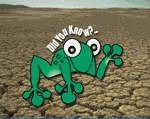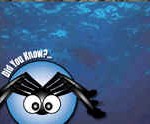Your Change Style
Has your company experienced any of these changes recently?
Downsizing
Re-engineering
Mergers
Acquisitions
Growth
Computer Systems
Information Overload
Change is constant. The only sustainable competitive advantage today is implementing those changes faster and more smoothly than your competitors. Following any significant change, sildenafil sick people respond in one of four ways. The Changes and Choices course identifies the four types of change styles active within your organization and transforms “Resisters, ask ” “Resigners, recipe ” and “Adaptives” into dynamic “Change Leaders” who quickly adapt to the changing program with a positive, proactive mindset. “Change Leaders” within an organization create true realignment around new challenges, and profoundly affect a company’s internal strength.
Common Change Styles
We all have a default “change” setting, a kind of internal thermostat which guides our natural response to change. In the workplace some change styles are simply more advantageous. With Changes and Choices, you can learn a more productive style.
Do you spot your natural change style?
Ignore it. Maybe all the experts are wrong. [Resigned]
Fight it for all you’re worth. [Resisting]
Give in and roll with the punches. Keep your fingers crossed that things will get back to normal after each change. [Adaptive]
Learn to enjoy it, make it work for you, and thrive in it. [Change Leader]
Measurable Business Results
Employees Before
Feeling a lack of control
Angry, frustrated
Candidates for workplace violence
Paralysis, deer in headlights
Complaining
Blaming management or other dept
Organization Before
Mgmt out of touch with employees
Employees lost and floundering
Duplication of effort and balls dropped
Productivity lost
Confusion
Fighting fires
Employees After Changes and Choices
Connected
Creating desired future
Understanding change personally
Empowered
Optimistic
Taking personal responsibility
Organization After Changes and Choices
Sr mgmt in touch with employees
Clarified direction
Clarified roles and responsibilities
Productivity maintained
Specific change plan
Anticipating and preventing problems
Never in the history of mankind have we faced such rapid complex change. In nature, when such rapid changes occurred, some species became extinct while others miraculously adapted. Take a look at how some of nature’s winners manage to change. If they can do it, you can.
Ornate Horned Frog
Once there was a frog called the ornate horned frog who faced a drying up creek bed. He could have given up, but he was a change leader, and his survival was at stake. So the frog learned estivation which is similar to hibernation. It is a dormant state an animal assumes in response to adverse environmental conditions, in this case, the prolonged dry season of certain tropical regions.How does this frog do it?
They shed several intact layers of skin, forming a virtually waterproof cocoon that envelopes the entire body, leaving only the nostrils exposed, which allows them to breathe. These herpetological mummies remain in their cocoons for the duration of the dry season. When the rains return, the frogs free themselves of their shrouds and make their way up through the moist soil to the surface. Now that’s change adaptation!
Mexican Walking Fish
So your pond is drying up huh, and burying yourself in the mud hasn’t worked! A change leader always looks for another way. This fish learned to walk. In 1968, this exotic fish was confined to three Florida counties; by 1978 it had spread to 20 counties in the southern half of peninsular Florida–a profound feat for a fish! The species is capable of overland migrations that normally take place at night or during periods of rain. Now that’s a change leader.
So there’s not enough food in the ole spider refrigerator, and pickins are kinda slim. Well, let’s go searching underwater! One problem, the skeptics said, “you don’t breathe underwater.” No problem for a change leader, they find a way. These spiders dive underwater and carry a bubble of air like a scuba diver carries a tank. A change leader sees no limits and finds solutions to any problem. Failure is not an option!
Fairy penguins
When you think of penguins, you think of those little tuxedo wearing guys that hang out in the snow….right?….wrong! Well these little blue penguins (Eudyptula minor) breed in southern Australia and New Zealand in 80-100 degree temperatures. And the sheep said a vacation to the beach couldn’t be done. These penguins can send their friends a post-card, cause they’ve learned to thrive in a changing environment, and you can too!







 Facebook
Facebook Twitter
Twitter Youtube
Youtube GooglePlus
GooglePlus LinkedIn
LinkedIn